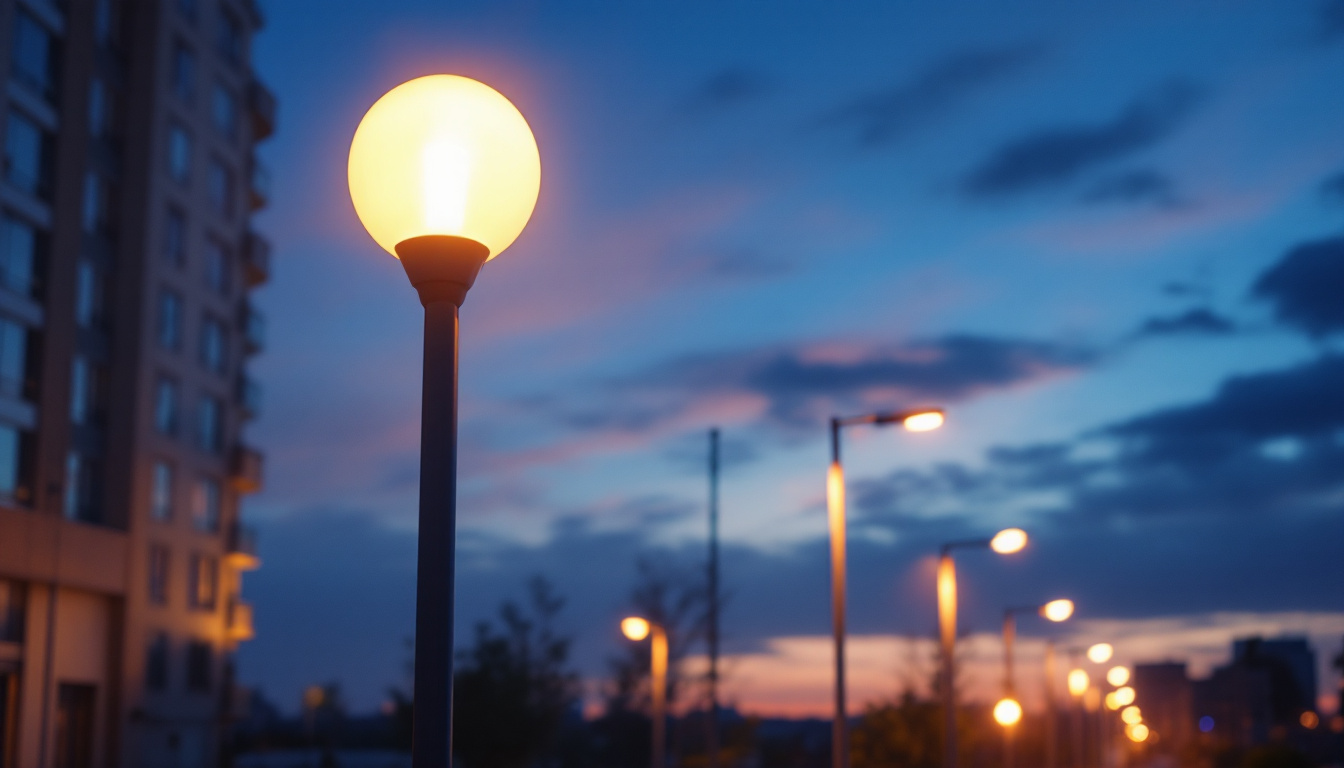
For lighting contractors, mastering the nuances of 277 volt LED bulbs is essential when working on commercial and industrial projects. Unlike standard residential lighting, which typically operates at 120 volts, 277 volt systems are common in larger facilities such as office buildings, warehouses, and retail spaces. These higher voltage systems allow for more efficient distribution of power over longer distances, reducing energy loss and improving overall system performance.
277 volt LED bulbs are designed specifically to operate safely and efficiently at this higher voltage. Their internal drivers and components are engineered to handle the electrical load without compromising lifespan or light quality. Understanding the electrical characteristics and installation requirements of these bulbs ensures contractors can deliver reliable, energy-efficient lighting solutions that meet client expectations and code requirements.
Many commercial buildings use 277 volt lighting circuits because they are derived from a 480/277 volt three-phase power supply, which is a common utility service for large facilities. This setup allows for reduced current flow in the wiring, enabling the use of smaller gauge wires and lowering installation costs. Additionally, 277 volt lighting circuits can support a larger number of fixtures on a single circuit, which simplifies electrical design and maintenance.
For lighting contractors, recognizing the advantages of 277 volt systems helps in recommending appropriate lighting solutions and ensuring compatibility with existing infrastructure. It also highlights the importance of selecting LED bulbs specifically rated for 277 volts, as using lower voltage-rated bulbs can lead to premature failure or unsafe operating conditions. Moreover, the energy efficiency of LED technology plays a crucial role in reducing operational costs for businesses, making it an attractive option for facility managers looking to optimize their lighting systems.
Furthermore, the longevity of 277 volt LED bulbs contributes significantly to reduced maintenance efforts and costs. With lifespans often exceeding 50,000 hours, these bulbs minimize the frequency of replacements, which is particularly beneficial in high-ceiling environments like warehouses where changing bulbs can be labor-intensive and costly. Additionally, many 277 volt LED options come with advanced features such as dimming capabilities and smart technology integration, allowing for greater control over lighting conditions and further enhancing energy savings. As the demand for sustainable and efficient lighting solutions continues to grow, contractors who are well-versed in the specifications and benefits of 277 volt LED bulbs will be better positioned to meet their clients’ evolving needs and expectations.
Choosing the right 277 volt LED bulb goes beyond simply matching the voltage rating. Contractors must evaluate several factors to guarantee optimal performance and client satisfaction.
One of the primary considerations is the wattage of the LED bulb relative to its lumen output. LED technology offers significant energy savings compared to traditional lighting, but selecting a bulb that provides sufficient brightness for the space is critical. For example, replacing a 100-watt incandescent bulb might require a 15 to 20 watt LED bulb that delivers equivalent lumens.
Lighting contractors should consult photometric data and consider the application’s lighting requirements, such as ambient lighting levels, task lighting needs, and fixture placement. This ensures that the lighting design achieves both energy efficiency and visual comfort.
Color temperature, measured in Kelvins (K), affects the ambiance and functionality of a space. For commercial environments, 3500K to 4100K is often preferred for balanced, neutral white light that promotes productivity without being harsh. In some cases, warmer temperatures (2700K to 3000K) are used in hospitality settings to create a welcoming atmosphere.
The Color Rendering Index (CRI) indicates how accurately a light source reveals colors compared to natural light. A CRI of 80 or above is generally recommended for commercial spaces to ensure colors appear natural and vibrant. Lighting contractors should prioritize bulbs with high CRI values to enhance visual clarity and occupant satisfaction.
277 volt LED bulbs must be compatible with existing fixtures and control systems such as dimmers, occupancy sensors, and daylight harvesting controls. Not all LED bulbs function properly with every control device, so contractors should verify compatibility to avoid flickering, buzzing, or reduced bulb life.
Moreover, some LED bulbs are designed with integrated drivers that support dimming, while others are not. Selecting bulbs that align with the client’s control strategy can maximize energy savings and user experience.
Proper installation is critical to ensure the safety, performance, and longevity of 277 volt LED bulbs. Lighting contractors should adhere to industry standards and manufacturer guidelines during every project.
Working with 277 volt systems requires heightened attention to electrical safety. Contractors must ensure power is fully disconnected before beginning installation and use appropriate personal protective equipment (PPE). Additionally, all wiring and fixtures must comply with the National Electrical Code (NEC) or local regulations, which often stipulate specific requirements for commercial lighting circuits.
Proper grounding, secure connections, and the use of UL-listed components are essential to prevent electrical hazards. Contractors should also verify that circuit breakers and fuses are correctly rated for the load to avoid overloads and potential fire risks.
LED bulbs are sensitive to physical damage and environmental conditions. Contractors should handle bulbs carefully to avoid damaging internal components or the bulb’s protective coating. Installation should be performed in clean, dry environments whenever possible to prevent contamination or moisture ingress.
When installing, ensure bulbs are securely seated in the fixture sockets to maintain proper electrical contact. Over-tightening can damage bulbs or fixtures, while loose connections may cause flickering or intermittent operation.
After installation, thorough testing is vital to confirm that all bulbs operate correctly and integrate seamlessly with control systems. Contractors should check for consistent light output, absence of flicker, and proper dimming functionality if applicable.
Documenting the installation and testing results can assist in future maintenance and provide clients with assurance of quality workmanship. Additionally, commissioning lighting systems to optimize settings such as dimming levels and sensor thresholds can enhance energy savings and occupant comfort.
Maintaining 277 volt LED lighting systems involves routine inspections and prompt troubleshooting to sustain performance and extend bulb life.
Dust, dirt, and debris can accumulate on fixtures and bulbs, reducing light output and efficiency. Regular cleaning using soft, dry cloths or approved cleaning agents helps maintain optimal illumination levels. Contractors should schedule periodic inspections to identify any signs of wear, damage, or electrical issues.
Some typical problems encountered with 277 volt LED bulbs include flickering, dimming inconsistencies, and premature failure. Flickering may result from incompatible dimmers or loose wiring connections. Ensuring compatibility and securing electrical connections often resolves these issues.
Premature bulb failure can stem from voltage fluctuations, poor heat dissipation, or substandard product quality. Contractors should recommend high-quality bulbs from reputable manufacturers and consider installing surge protection devices to safeguard lighting systems.
As technology advances, upgrading existing 277 volt lighting systems with newer LED models can yield additional energy savings and improved lighting quality. When retrofitting, contractors must assess fixture compatibility, power requirements, and control integration to ensure a smooth transition.
Providing clients with detailed cost-benefit analyses and demonstrating potential energy savings can facilitate decision-making and promote sustainable lighting solutions.
Lighting contractors who stay informed about emerging technologies and industry trends can offer cutting-edge solutions that enhance building performance and occupant experience.
Smart LED bulbs compatible with 277 volt systems enable advanced control features such as remote operation, scheduling, and adaptive lighting based on occupancy or daylight levels. Integration with building management systems (BMS) and Internet of Things (IoT) platforms allows for data-driven energy management and predictive maintenance.
Contractors can differentiate their services by incorporating smart lighting solutions that optimize energy use and provide clients with actionable insights into building performance.
Many jurisdictions have adopted stringent energy codes that encourage or mandate the use of high-efficiency lighting, including LED technology. Understanding these regulations helps contractors ensure compliance and avoid costly rework.
Additionally, various utility companies and government programs offer incentives and rebates for upgrading to energy-efficient lighting systems. Contractors should stay informed about available programs to help clients maximize financial benefits and reduce project costs.
LED lighting significantly reduces energy consumption and carbon footprint compared to traditional lighting technologies. By promoting 277 volt LED solutions, contractors contribute to sustainable building practices and support clients’ environmental goals.
Highlighting the long-term cost savings, reduced maintenance needs, and positive environmental impact of LED lighting can strengthen client relationships and position contractors as trusted advisors in sustainable construction.
For lighting contractors, expertise in 277 volt LED bulbs is a valuable asset that enhances project outcomes and client satisfaction. By understanding the electrical characteristics, selecting appropriate products, adhering to best installation practices, and embracing technological advancements, contractors can deliver efficient, reliable, and future-ready lighting solutions.
Continual education, attention to detail, and proactive maintenance ensure that 277 volt LED lighting systems perform optimally over their lifespan. Ultimately, mastering these bulbs not only improves professional reputation but also contributes to the broader goals of energy efficiency and sustainability in the built environment.
Ready to elevate your lighting projects with the best 277 volt LED bulbs in the market? Look no further than LumenWholesale, where we provide contractors with exceptional, spec-grade lighting products at unbeatable wholesale prices. Say goodbye to local distributor markups and hello to our premium selection that meets the highest industry standards. With LumenWholesale, you’ll enjoy the convenience of bulk buying with free shipping, ensuring you get the high-performance lighting your projects deserve at the best value. Don’t compromise on quality or cost—visit LumenWholesale today and experience the ultimate in contractor-focused lighting solutions.

Discover the essentials of grid lighting compliance with our comprehensive guide tailored for lighting contractors.

Discover essential tips for selecting and installing street pole lights to prevent expensive errors in your lighting projects.

Discover the top mistakes lighting contractors make with LED sensors and learn how to avoid them.

Explore the pitfalls of relying on local distributors for bulk industrial lighting purchases.